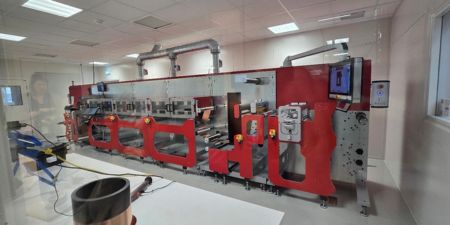
The CREATE International Faculty Delegation’s afternoon visit to the Institute for Energy Technology (IFE) battery research facility in Norway was an eye-opening experience. The introduction to fundamental battery research, development and manufacturing processes was both fascinating and inspiring. IFE, established in 1948, has been a cornerstone of energy research for 77 years, evolving from nuclear power to a broad spectrum of sustainable technologies, including batteries since 2010.
The facility, spanning over 4,000 square meters of labs, employs 720 staff from 35 nationalities, with 21 dedicated to battery research under the leadership of Hanne Flåten Andersen, a senior scientist and Center Director for FME Battery. Annual operating revenue for the lab is about 1.3 billion Kroner ($130M USD), with 10% provided by the Norwegian government, and the rest from grants and private projects. IFE’s work is deeply integrated with industry, spawning companies like Morrow, Cenate, and Vianode. This model of public-private collaboration to support research-to-commercialization showcases Norway’s innovative approach to energy solutions.
The visit highlighted IFE’s focus on silicon anode materials, alternative chemistries like sodium-ion materials, and second-life applications for batteries. Observing the manufacturing process—from slurry coating on copper, electrolyte filling, and formation cycling of batteries for service—was enlightening. The complexity of reclaiming, discharging, and deconstructing batteries underscored the challenges of recycling and sustainability, sparking ideas for the CREATE delegation to develop classroom models to teach students about these intricate devices.
In the testing labs, the group was captivated by efforts to revive old batteries for second-life projects, extending their utility in stationary applications like grid storage. IFE’s research also addresses critical variables affecting battery performance, such as temperature, load type, and application-specific needs (e.g., high power for electric tools versus long lifespan for stationary energy storage). Their work on reducing cobalt in cathodes—evident in Volkswagen’s progress from 33% in 2014 e-Golfs to 10% in current models—demonstrates incremental but impactful advancements towards less expensive and more sustainable battery materials.
What stood out was IFE’s role in Norway’s leadership in EV adoption and marine battery applications, driven by a commitment to tackling the climate crisis. Unlike the U.S., where battery research often relies on corporate partnerships, IFE’s independent, well-funded model resembles a national lab but with stronger commercial ties. This visit left CREATE inspired by Norway’s approach to industrial innovation, and concerned about the U.S. lagging in this critical field. The wealth of knowledge at IFE, from battery chemistry to sustainability, offers valuable lessons for global energy innovation.
Tomorrow the CREATE Delegation heads to Stena Recycling.
Sign up for the CREATE Newsletter and stay updated on the latest information in Renewable Energy Education.
Copyright @ 2025 CREATE National Energy Center
This material is based upon work supported by the National Science Foundation under Grant #2201631. Any opinions, findings, and conclusions or recommendations expressed in this material are those of the author(s) and do not necessarily reflect the views of the National ScienceFoundation.